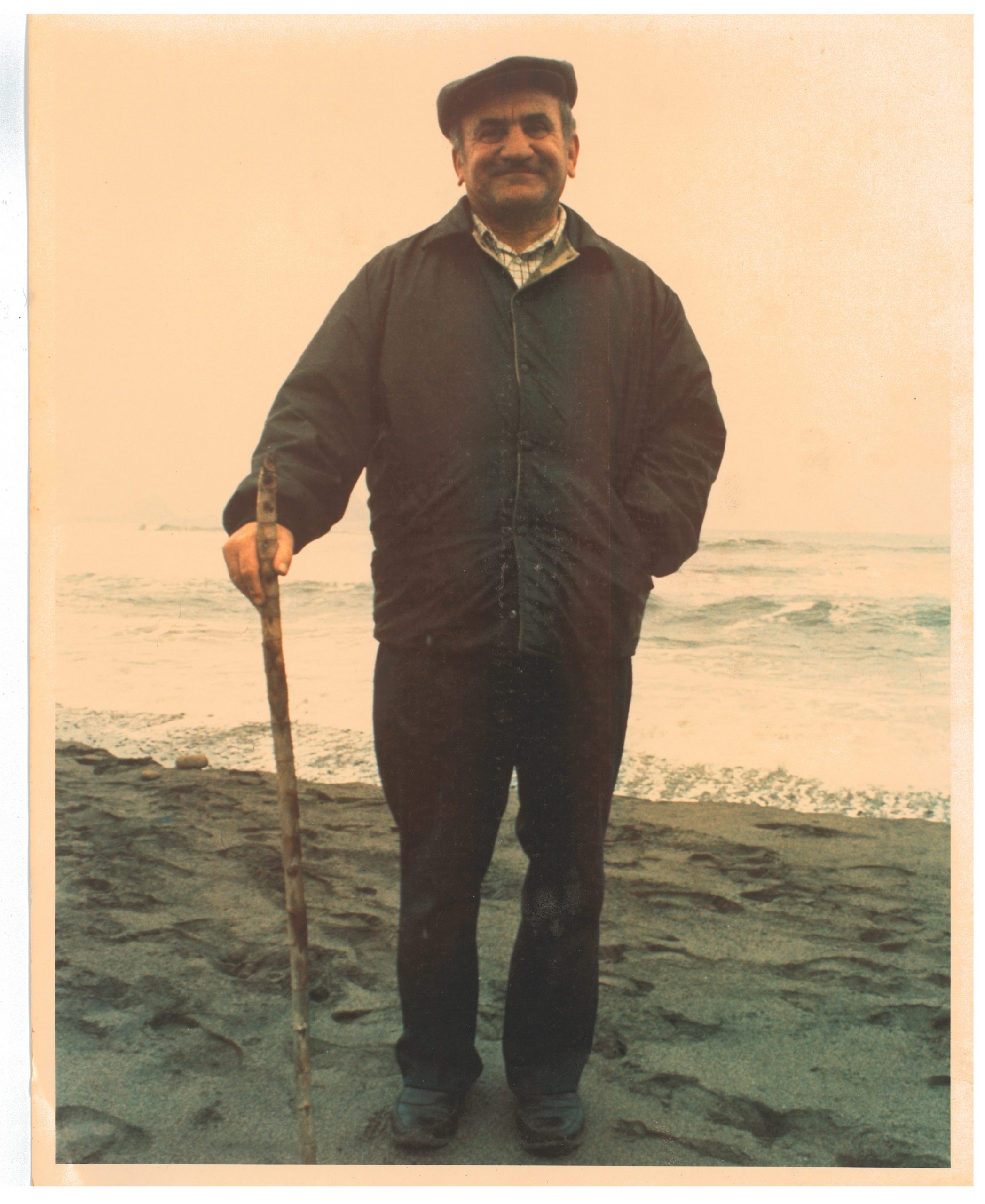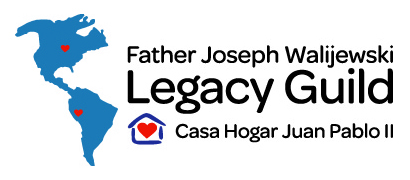
Canonization Process
All Christians are called to be saints. Saints are persons in heaven (officially canonized or not), who lived heroically virtuous lives, offered their life for others, or were martyred for the faith, and who are worthy of imitation.
In official Church procedures there are three steps to sainthood: a candidate becomes “Venerable,” then “Blessed” and then “Saint.” Venerable is the title given to a deceased person recognized formally by the pope as having lived a heroically virtuous life or offered their life. To be beatified and recognized as a Blessed, one miracle acquired through the candidate’s intercession is required in addition to recognition of heroic virtue or offering of life. Canonization requires a second miracle after beatification. The pope may waive these requirements. A miracle is not required prior to a martyr’s beatification, but one is required before canonization.
His Canonization Timeline
March 2011
March 19, 2013
An edict is tacked to the front door of St. Joseph the Workman Cathedral in La Crosse, declaring that “anyone who can offer testimony, good or bad, about the Servant of God, must make themselves known to the tribunal so they may give their testimony.” Bishop Callahan, on the Feast of St. Joseph, announces the opening of the Cause for Beatification and Canonization of Father Joseph A. Walijewski.
May 1, 2013
2015
May 27, 2018
Canonization Process
Your Title Goes Here
Your content goes here. Edit or remove this text inline or in the module Content settings. You can also style every aspect of this content in the module Design settings and even apply custom CSS to this text in the module Advanced settings.
Why Father Joe?
When Bishop William Patrick Callahan visited Father Joe’s tomb on the Casa Hogar property in Peru, he was sufficiently moved by the great veneration which the people of the orphanage and its neighbors paid to the late priest that he was persuaded to open his cause. While the local bishop of a diocese must grant permission for the cause of an individual to be opened, oftentimes those most touched by the individual’s witness to Christ are the source of inspiration for such action by a bishop. Throughout the history of the Church individuals who were eventually canonized first came to a bishop’s notice after they were raised to a certain state of veneration by popular acclaim.
How long does the process take?
Because each life is different, the length of time is indeterminate. The shortest canonization in history was that of St. Peter of Verona (April 6) – whom Pope Innocent IV declared a saint on March 9, 1253, 11 months after he died. On the other hand, while St. Joan of Arc died in 1431, she was declared a martyr for the faith 25 years later by papal decree, but was not canonized until 1920.
Why does it take so long?
The process involves investigating both the moral life and life of faith of an individual. Such an investigation requires that scholars pour over documents with intense scrutiny to establish that an individual has lived a life of heroic virtue and kept faithful to Catholic doctrine in all writings and teachings. Consequently, it often takes time to gather the evidence. In addition, examination of the evidence will inevitably take some time, too, depending on how much evidence is produced.
How many causes are currently in process?
Numerous dioceses around the world have causes opened for individuals who many believe have led lives of heroic virtue. Among the five provinces of the State of Wisconsin – Archdiocese of Milwaukee, Diocese of Green Bay, Diocese of Madison, Diocese of Superior and Diocese of La Crosse – there are currently three open causes at this time.
Aside from the cause for Father Joe in the Diocese of La Crosse, diocesan native Brother James Miller’s cause has been ongoing since 2010. A member of the Brothers of Christian Schools (FSC), Brother James was shot and killed in Guatemala and declared a martyr by the bishops of Guatemala. In addition, the Diocese of Madison has opened the cause of Father Samuel Mazzuchelli, a Dominican missionary from Italy who traveled extensively throughout the upper Midwest, spreading the faith and founding parishes in Illinois, Iowa and Wisconsin – including two in the Diocese of Madison. He was declared venerable by Pope John Paul II in 1993.
In addition, several other individuals who have had an impact on the history of the Church in Wisconsin also have their causes opened – Blessed Solanus Casey (1870-1957), a Capuchin priest and the first native-born American man to be declared venerable by the Church, and Venerable Bishop Frederic Baraga (1797-1868), Slovenian immigrant and first bishop of the Diocese of Marquette, Mich. (then Diocese of Sault Sainte Marie). Father Solanus was born in Oak Grove, Wis., and as part of his travels, Bishop Baraga ministered to the Chippewa people at La Pointe, Wis.
What is the purpose of the Father Joseph Walijewski Legacy Guild?
The guild has two purposes – first and foremost it mobilizes the faithful by encouraging them to pray and report on possible miracles that could further Father Joe’s cause. Second, because the canonization process requires time, talent and treasure to sustain the resources, which will bring the process to a successful conclusion, the guild serves as a central point for collecting donations that will be used to support the effort.
When did the title “Servant of God” start being used to describe Father Walijewski?
The canonization process begins at the diocesan level. In Father Joe’s case, Bishop Callahan gave permission to open the investigation into his virtues. At this point Father Joe became known as a “servant of God.” After waiting the prerequisite five years after Father Joe’s death (although this five year period can be waived by papal authority, as it was for Mother Teresa and Pope John Paul II), the cause was announced on March 19, 2013, at St. Joseph the Workman Cathedral.
When is someone considered venerable?
When enough information has been gathered about a servant of God, the Congregation for the Cause of Saints in Rome recommends that the pope proclaim the servant of God’s heroic virtues – that the individual lived his life demonstrating to a heroic degree the theological virtues, hope, faith and charity; and the cardinal virtues, prudence, justice, fortitude, and temperance. It is this heroism which is reflected in the title “venerable.” While a venerable has no feast day, nor churches built in his honor, and the Church has made no definitive statement about whether the person is in heaven, prayer cards and other material can be printed to promote the individual’s cause and encourage the faithful to pray for a miracle through the venerable’s intercession as a sign of God’s will that the person is canonized.
What is canonization?
Finding its origins in the Catholic doctrine of the worship, invocation, and intercession of the saints, canonization is the process by which the Church recognizes those souls worthy of honor. While God alone deserves adoration in the strict sense of the word, the saints are also worthy of our praise for the Divine supernatural gifts freely given by God which have earned them eternal life – the same gifts through which they reign with God in heaven as friends and servants. Canonization then is a decree regarding the public ecclesiastical veneration of an individual. A decree isn’t necessary for local veneration, however; only when it binds the whole Church is the decree considered universal and therefore a true canonization.
Your Title Goes Here
Your content goes here. Edit or remove this text inline or in the module Content settings. You can also style every aspect of this content in the module Design settings and even apply custom CSS to this text in the module Advanced settings.
What is beatification?
In the same way that a canonization is made official through decree, beatification also requires a papal decree. If a decree is issued which permits – but doesn’t necessarily prescribe, that is oblige – one to venerate an individual in certain times and places (that is, not universally), it is a decree of beatification.
Thus, beatification differs canonically from canonization in two important ways: 1) beatification is a locally restricted, not universal, permission to venerate an individual and 2) is only a permission, not a precept – that is a command or rule intended as a general rule of action – while canonization is universal and at least implies a precept. Different from venerable as well, one who is “blessed” – the title given upon beatification – is a person, it can be held, who is in heaven. For a martyr, the pope has only to declare the person’s martyrdom in order to obtain the title “blessed.” For a confessor saint, one miracle must be proven attributable to the person’s intercession. This miracle is taken as a sign by God that the person in question is enjoying the beatific vision. The most common sort of miracle is a medical cure inexplicable by medical or scientific means. Once the person is named blessed, he will receive a feast day – although its celebration is not universal and usually restricted to places significant in the Blessed’s life, such as his home diocese.
Steps to Sainthood
The steps to sainthood and some modern causes
1. Servant of God
This first step examines the life and writings of the candidate. Evidence that shows the candidate lived a holy life is gathered and submitted in a special report called a Positio to the Vatican’s Congregation for the Causes of Saints.
- Father Joseph Walijewski (1924-2006)
- Ordained for the Diocese of La Crosse in 1950
- 2013 cause opened
- Brother James Miller, FSC (1944–1982)
- Born in Stevens Point
- 2010 cause opened
2. Venerable
The pope declares a person venerable after Church officials conclude their investigation that the person led a life of heroic virtue.
- Father Samuel Mazzuchelli (1806 –1864)
- Helped bring the Church to the Iowa-Illinois-Wisconsin tri-state area. He founded a number of parishes in the area, and was the architect for Saint Gabriel Church in Prairie Du Chien.
- 1964 cause opened
- 1993 declared venerable
- Bishop Frederic Baraga (1797–1868)
- Known as the “Snowshoe Priest,” he reestablished the Catholic Mission at La Point, WI
- 1973 cause opened
- 2010 declared venerable
3. Blessed
The pope declares a person blessed after a miracle attributed to his or her intercession is canonically recognized.*
- Father Solanus Casey (1870-1957)
- Born in Oak Grove, just south of Prescott, WI
- 1982 cause opened
- 1995 declared venerable
- 2017 declared blessed
4. Saint
One is declared a saint in an elaborate ceremony after another miracle is canonically recognized.
- Kateri Tekakwitha (1656-1680)
- First Native American to be recognized as a saint
- 1884 cause opened
- 1943 declared venerable
- 1980 declared blessed
- 2012 declared a saint
* A martyr may be declared blessed without a miracle Source: CNS
What is a miracle?
According to the Catholic Encyclopedia, a miracle is a wondrous act or event performed or made possible by a supernatural power as a sign of a mission or gift from God.
How many miracles are required for the making of a saint?
To be canonized a saint, a second miracle after the initial miracle, establishing the person as “blessed,” must be ascribed to the person’s intercession after his her death.
What does it mean to “worship” a saint?
The distinction between worship of God and worship of a saint is more easily seen in the distinction between two Greek terms: latria, that is, strict adoration, and dulia, that is honor or humble reverence given to saints. In addition, only one saint of the Church is owed hyperdulia¸ a higher form of dulia, the Blessed Virgin Mary, who because of her greater excellence as the Immaculate Conception deserves more honor than the other saints. Speaking in general about the distinction between worship of saints and worship of God, St. Augustine notes in his writings that the Church erects her altars to God alone but erects them, as well, in honor and memory of the saints and martyrs. It is for this reason that we name such things as our churches after saints.
What does Scripture say about the worship of saints?
On several occasions, no less an authority than St. Paul beseeches Christians to help him by their prayers for him to God (Romans 15:30, 2 Corinthians 1:11, Colossians 4:3, Ephesians 6:18-19). It can be argued, therefore, that if we can ask the intercession of others alive on earth, how much greater reason do we have to ask the intercession of those who are truly alive in heaven? St. John in Revelations specifically identifies the communion of saints in heaven worshiping God who upon opening the Book of Life “fell down before the Lamb, having every one of them harps and golden vials full of odors, which are the prayers of saints” (Revelation 5:8).
But isn’t Jesus Christ the sole mediator between God and man?
Jesus Christ alone mediates between God and man and allows us access to the graces of God the Father. Christ is our one and only Redeemer. However, as the passage cited above in Revelations (5:8) indicates when it comes to advocating or interceding by way of supplication, the saints are also included among those we consider mediators. As early as 451 in the eleventh session of the Council of Chalcedon the Church Fathers are praying, “Flavianus lives after death! May the Martyr pray for us!”
What is the difference between a martyr saint and a confessor saint?
There are two basic types of saints – martyrs and confessors. The former testify to the truth of Christ by the manner of their dying; and the latter, who die peacefully, by their manner of their living. Father Joe’s cause is to demonstrate that he was a saint according to his manner of living. With references dating as early as the fourth century, the martyrs are as old as the Church itself; martyrs have had such an immediate claim to sainthood that even those heretics in early Church history known as Chiliasts made an exception for the martyrs. Anticipating the position of many modern Protestant sects, Chiliasts believed that those who departed in grace would only obtain eternal glory after the general resurrection of the body – taking St. Paul’s words about “falling asleep in the Lord” too literally – all those, that is, except martyrs. According to Catholic teaching, all souls receive an individual judgment after death and general judgment at the end of time. Originally martyrs were determined by the bishop in whose jurisdiction the soul in question had offered his life as testimony to Christ. The worship of confessors, on the other hand, was relatively newer in the Church. In the early Church, a confessor was someone who freely confessed Christ when examined by interrogation, torture or other punishments in the presence of enemies of the faith who yet died peacefully. Later, a confessor was considered anyone who had lived a holy life and experienced a holy death as a Christian. In a certain sense, the confessor’s life of heroic virtue resembles very much the self-denying, love-inspired actions of the martyrs and their lives can be considered a sort of “prolonged martyrdom.”
Is the pope infallible in issuing a decree of canonization?
According to the Catholic Encyclopedia, most theologians think the pope is infallible in such cases. St. Thomas Aquinas states the case this way: “Since the honor we pay the saints is in a certain sense a profession of faith, i.e., a belief in the glory of the Saints, we must piously believe that in this matter also the judgment of the Church is not liable to error.”
 Your prayers and financial support advance the Father Joseph Walijewski Legacy Guild.
Your prayers and financial support advance the Father Joseph Walijewski Legacy Guild.
